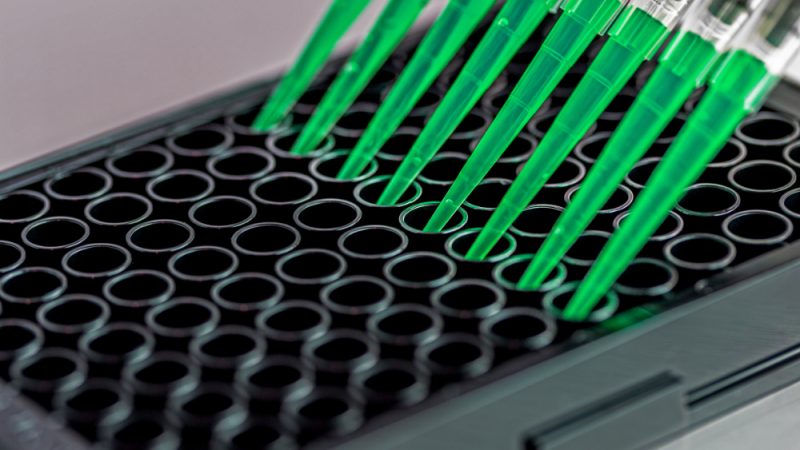There are a multitude of challenges associated with the production of next-generation biopharmaceuticals and vaccines. To be effective as a public health tool, vaccines for example are increasingly administered in form of a combination of more than one component and produced in large scale by means of seed viruses. These are living pathogens that multiply in cells from chicken eggs. The rule of thumb “one vaccine dose per egg” means that the number of vaccines is limited to 150 to 200 million available eggs worldwide. Formerly used alternative platforms – such as vaccine production in cell cultures (e.g. mammalian cells) – also have the disadvantage of instability. A new platform technology for the production of the most diverse proteins in an optimised process could be the answer.
This platform-technology is based on virus-like particles (VLP). Since a lot of modern biopharmaceuticals are produced in that way, VLP are suited for gene therapy or support as vaccines to support the organism in producing antibodies against various pathogens.
Memory match player
How does that work? Imagine the immune system as a memory match player busily identifying the surfaces of any virus that appears and developing resistances as soon as it gets into contact with the virus. VLP imitate the surface of the virus and feign an infection without damaging the body, because the dangerous genetic material inside the virus envelope that is responsible for infection, has been removed. Since the surface proteins of VLP can be tailored to various applications, the next-generation nanoparticle technology is becoming ever more interesting for industry.However, the production of this specific type of biomolecules also calls for new and above all, more robust production procedures.
Importance for the biopharmaceutical pharmacy
With a new cell line and unique insect cell expression system, faster, more economic and safer production of modern pharmaceuticals could soon become reality – from gene therapies for neurodegenerative disorders such as Parkinson’s or Alzheimer’s, to cancer therapy and modern preventive vaccines against, for example, the influenza, HIV, dengue or zika virus.Unlike mammalian cells, the insect cell factories achieve 30 times bigger yields while maintaining identical product quality.Using a sophisticated fermentation process, the genetically optimised insect cell line is stimulated to grow and produce protein in a bioreactor, before the scientists infect it with the baculo viruses. These carry the desired genetic information for the production of vaccine particles. After some four days, the particles produced by the cell are purified. The result is the desired inactivated vaccine.
In a next step, the aim is to prepare the pilot-production platform for larger scales to entail a greater potential for the pharmaceutical industry.
Picture credits: Shutterstock
